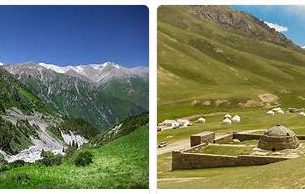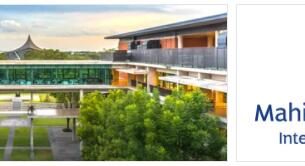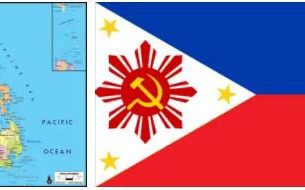The island fragmentation, the remarkable orographic development as well as the calamities such as earthquakes and tsunamis have constituted, in Japan, a strong obstacle to the creation of a unitary network of communication routes. Precisely the geological instability has favored investments in research on methods of forecasting destructive natural phenomena and in the development of anti-seismic measures for buildings and communication routes, a field in which the country is at the forefront. From the earliest centuries the web of road communications (later, also of the railway ones) was articulated along the coasts, on which it always had its main nodes. However, the country is now equipped with a sufficiently organic system of communication routes, although perhaps not up to par with its global economy. The railways, largely state-owned, they extend for over 20,000 km (2005) and have their maximum concentration in areas converging on large cities which, for urban transport, make extensive use of subways; High-speed lines, crossed by Shinkansen express trains, are in service on the so-called Tokaidō line (between Ōsaka and Tōkyō), between Ōsaka and Hakata and between Tōkyō and Morioka. Honshū is of course the best served island; numerous Honshū is of course the best served island; numerous Honshū is of course the best served island; numerous ferry-boats and powerful submarine tunnels ensure connections throughout the archipelago: Japan can count on the longest railway tunnel in the world, the Seikan, over 53 km, an underwater tunnel that crosses the Tsugaru Strait between the islands of Hokkaidō and Honshū. The roads cover a total of over 1.18 million km, and absorb 90% of freight traffic and 65% of passenger traffic; they also mostly wind along the coasts, linking the coastal cities together (however, there are also numerous transversal arteries) and supporting the movement of over 78 million vehicles; the motorway network (about 7000 km) is still under-dimensioned to support this traffic. In 1998, the Akashi-Kaikyo viaduct (3910 m), the longest suspension bridge in the world, was opened to traffic, connecting Kobe to the island of Awaji. Gigantic dimensions and technologically d ‘equipment avant-garde naturally have the main ports whose movement is truly powerful; among the major seaports, all with over 100 million tonnes landed and loaded annually, are Chiba, Kobe, Yokohama and Nagoya; a little lower is the port of Kawasaki. Much of the maritime traffic is carried out by Japanese ships that sail all the routes of the globe, but especially those of the Pacific; the national merchant navy has approx. 6900 ships, with a total gross tonnage of 12.7 million t. Japan uses the company for international air communications Much of the maritime traffic is carried out by Japanese ships that sail all the routes of the globe, but especially those of the Pacific; the national merchant navy has approx. 6900 ships, with a total gross tonnage of 12.7 million t. Japan uses the company for international air communications Much of the maritime traffic is carried out by Japanese ships that sail all the routes of the globe, but especially those of the Pacific; the national merchant navy has approx. 6900 ships, with a total gross tonnage of 12.7 million t. Japan uses the company for international air communications Japan Air Lines (JAL), which makes direct connections can be said to be worldwide, including transpolar and trans-Siberian routes; there are numerous other smaller companies, among which the most important, destined for internal services, is All Nippon Airways. The major airports are the international ones of Tōkyō (Narita) and Ōsaka, Fukuoka, Sapporo.
As for tourism, which has grown above all in the last decades of the 20th century thanks also to good accommodation, there are over 6 million foreigners who visit Japan annually, but in fact, the number of Japanese who go to Japan is much higher. ‘abroad. Among the tourist destinations favored by the Japanese are Thailand and Italy, but the short duration of the stays makes it difficult to distinguish the tourist movements from the trips of business. Visit healthvv.com for types of travel in Asia.
History
The first state formation took place around 400 AD when the Japanese states were united to form the state of Yamato. Under the influence of Chinese-Korean culture, an absolute monarchy developed around 700 with the Tennō (emperor) at its head. The capital was initially today’s Nara , from 794 to 1868 today’s Kyoto. In the 9th century, the Tennō became increasingly dependent on the court nobility and was finally limited to ceremonial tasks. In 1192 Minamoto was appointed Shogun(military commander in chief). Since then, the shoguns were the real rulers. Tokugawa Ieyasu made the shogunate hereditary in his family in 1603; The seat of government was Edo, the current one Tokyo. The first Europeans to come to Japan were Portuguese in 1542. Since 1639 the country has kept itself closed against Western influences, especially against Christian proselytizing. It was not until the 19th century that it had to open itself to influences from America and Europe under military pressure. The shogunate was abolished in 1868 and the feudal system in 1871. The state was modernized according to the European model. Industrialization and the development of an efficient transport infrastructure began. Japan signed the Tripartite Pact with Germany and Italy in 1940 and entered World War II in 1941. After the atomic bombs were dropped on Hiroshima and Nagasaki in 1945it had to surrender. In 1947 it was given a democratic constitution that was heavily influenced by the USA. After the Second World War, Japan managed to rise to an Asian great power within a few decades, based on its economic efficiency. Numerous corruption scandals have repeatedly led to resignations and changes at the top of the government. At the beginning of the 21st century, Japan had to cope with the aftermath of a severe economic and financial crisis and the Fukushima nuclear disaster.



